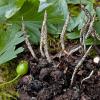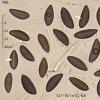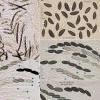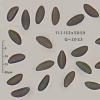
08-12-2025 21:04
Mark Stevens"Hello everyone,I'm relatively new to microscopy (

08-12-2025 18:59
 Lothar Krieglsteiner
Lothar Krieglsteiner
.. found by a seminar-participant, I do not know t

08-12-2025 17:37
 Lothar Krieglsteiner
Lothar Krieglsteiner
20.6.25, on branch of Abies infected and thickened

07-12-2025 16:07
Arnold BüschlenHallo, ich habe in einer Moos-Aufsammlung (epiphy

16-03-2014 22:00
Hello,I found this species a few months ago but ha

08-12-2025 13:39
Thomas Læssøehttps://svampe.databasen.org/observations/10572899

05-12-2025 17:33
 Bruno Coué
Bruno Coué
Bonjour, je serais heureux de recueillir votre avi
Hi to everybody and specially Jacques Fournier
Today we have examined these gregarious stromata up to 40 mm high growing on buried seeds of Cornus sanguinea or Crataegus monogyna. We don't know what the host is because they are living together and the stromata were growing under both trees.
After reading wonderfull Fournier's keys we are observing that our ascospores are greater: 12-16 x 5-7 versus 11-13 x 4.6-5.9 sec. Jacques. Also we have seen that collections on Cornus seeds can be greater. The question is: There is some innovation on this matter?
Many thanks in advance

your observations are very interesting and strongly suggest that the Xylaria on Cornus fruits has larger ascospores than the one on Crataegus, as previously observed on the material collected by Peter Welt. I hope that will be sorted out on molecular grounds but it can be expected these fruit-inhabiting species are phylogenetically very closely related (see also X. delitschii). I have no new information so far.
Saludos,
Jacques
HI Jacques
Welcome from the Antillas. I wish that you have found nice fungi.
Well, we will analyze both collections and I will keep you informed.
Thanks a lot, jacques




